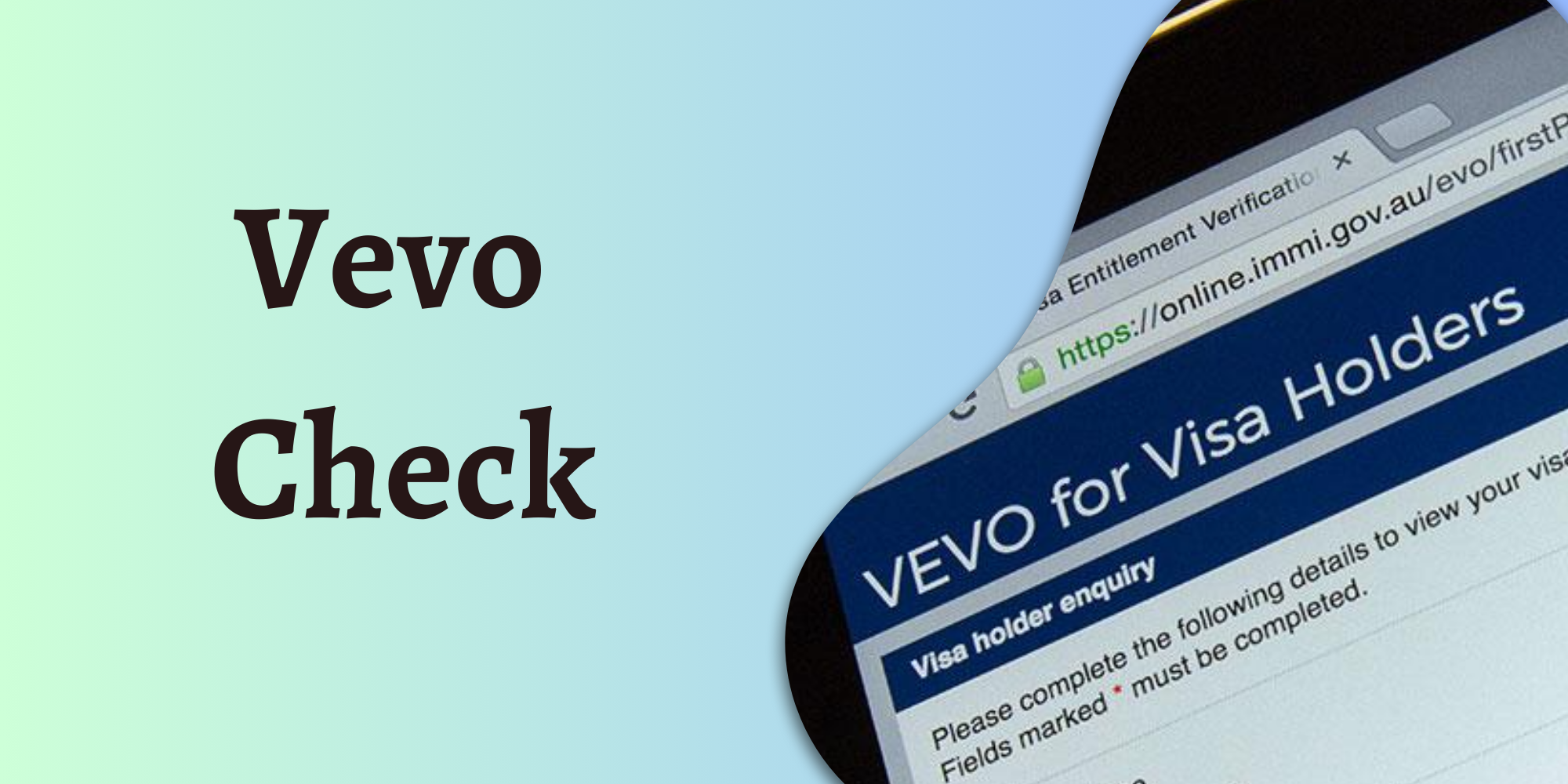If you’re in Australia for work or study – or an Australian employer working with foreign workers – stay on the right side of the law by doing a simple VEVO check regularly.
VEVO checks allows you to verify an individual’s current visa status, including crucial details like visa expiration date and specific conditions to uphold.
Read on to stay informed and compliant, and avoid potential legal consequences related to visa status and conditions.
What is VEVO Check?
A VEVO check (Visa Entitlement Verification Online) is an online verification process that allows visa holders, employers, and other relevant organisations to quickly confirm an individual’s visa status in Australia.
This ensures that anyone working, studying, or residing in Australia has the necessary authorisation to do so.
Through a VEVO check online, you can easily get real-time information on visa details anytime, anywhere. This ensures continuous compliance with visa regulations.

Why is a VEVO Check important?
Ensuring compliance
Regular VEVO checks help ensure that visa conditions are always met, avoiding any unintended breaches. This is particularly vital for visa holders, as failure to comply can have serious consequences.
Consequences of non-compliance for visa holders
For visa holders, neglecting to conduct a VEVO check may lead to unintended violations with severe consequences, such as:
- financial penalties, ranging from minor fines to substantial amounts
- visa cancellation
- deportation (particularly in cases involving serious breaches of visa conditions or unauthorised entry)
Consequences of non-compliance for employers
Employers also face significant consequences if they do not perform VEVO checks on their employees. Hiring individuals with expired visas or incorrect work conditions can result into:
- fines
- legal action from government agencies or affected individuals
- reputational damage that can impact business operations
- revocation of the ability to sponsor foreign workers.

Preventing fraud and abuse
How do VEVO checks prevent fraud and abuse?
- They verify the authenticity and validity of visa entitlements. This ensures that individuals are not using forged or counterfeit visas to gain unauthorised entry or work in Australia.
- They scrutinise the specific conditions attached to each visa. This ensures that individuals are adhering to the authorised activities and periods of stay permitted under their visas.
They cross-reference visa information with other government databases, such as passport records and work permit applications. This way, inconsistencies or discrepancies that may indicate fraudulent activity, can be identified.
Protecting the rights of employers and visa holders.
For employers, VEVO helps them prevent the unintentional hiring of individuals without the legal right to work. This way, they avoid legal ramifications
Simultaneously, for visa holders, it pretects their rights by ensuring that they are not subject to exploitative work conditions.
What information does a VEVO Check reveal?
A VEVO check shows you the following key pieces of information below:
- Visa type and subclass
- Visa grant and expiry date (if applicable)
- Visa conditions (e.g. work rights and restrictions, types of employment, study options, etc.)
- Visa status
- Entries allowed
- Passport details (e.g. name, date of birth, passport number, etc.)
- Entry date and length of stay
Who needs to conduct a VEVO check?
Vevo checks should be regularly performed by:
- Visa holders
- Employers
- Labour suppliers
- Education providers
- Migration agents
- Third-party organisations, such as banks and financial institutions
- Government agencies
How to check visa status through VEVO
For visa holders
For visa holders, you can check your own visa details with VEVO by following the steps below:
1. Go to the Department of Home Affair (DHA) website, and click “Check your own visa details.

2. Provide all the necessary information under the “Visa holder enquiry” section.
Choose “Passport” under document type. Completely fill out all the necessary fields, including reference type, date of birth, document number, country of document, and so on.

Tick the “I have read and agree to the terms and conditions” box.
3. Check the details of your visa.
Upon successful completion, the VEVO check results will display information such as your visa type, validity period, and associated conditions, among many others.
Here, you can save the visa details in PDF format for your records. You can also email the visa details to yourself or to relevant parties.
For organization account holders
As an organisation, you can also do a visa status check for an individual (e.g. an employee, international student, etc.). Below are the steps to perform a visa check for an individual:
1. Do a VEVO login using your organisation’s ImmiAccount.
If you don’t have one yet, you must follow the correct steps on how to create an ImmiAccount.
2. Obtain written consent from the visa holder.
Use a VEVO consent form. The consent form is a written document that the individual signs to authorise your organisation to conduct regular checks of their visa status and entitlements through the VEVO system.
Typically, it includes the following information:
- The individual’s name and contact details
- A copy of the individual’s passport
- Details of your organisation, including contact details
- Purpose of the VEVO checks
- Your organisation’s responsibilities in using the information (e.g. privacy and data protection, etc.)
Make sure to ask the individual to read the consent form carefully and sign it to indicate their agreement with the information and conditions in the consent form.
3. Access VEVO through the ImmiAccount and check visa details.
Once registered and with the necessary employee consent, you can use VEVO and enter the visa holder’s details, such as their name, date of birth and reference document number.
After which, you can already access an individual’s visa details, such as the visa subclass, visa grant and expiry dates, work entitlements, and any other relevant visa conditions.
Keep in mind that VEVO provides different access categories depending on the type of organisation. For example, employers may only see work entitlements, while educational institutions only have access to an individual’s study rights.
How long does a VEVO check take?
A VEVO check is generally quick and straightforward, and can be completed within a matter of minutes.
However, there can be slight delays during peak periods or system maintenance.
The complexity of the visa status can also influence processing time. Some visas may have more detailed conditions, requiring additional verification steps.
To expedite the process of VEVO checks, make sure to prepare and secure beforehand all the necessary information, such as passport details, visa reference documents, and visa holder consent.
How often to conduct VEVO checks?
There is no set rule for how often you must perform VEVO checks. However, it is recommended to establish a routine schedule for these checks.
This is particularly important for individuals on temporary visas, as they must adhere to specific visa conditions and work entitlements.
Who are legally permitted to work in Australia?
An individual must either possess Australian citizenship, or a visa with work entitlements, including (but not limited to):
- Temporary Skill Shortage (TSS) visa (Subclass 482)
- Skilled Independent 189 visa (Subclass 189)
- Skilled Nominated 190 visa (Subclass 190)
- Employer Nomination Scheme (ENS) visa (Subclass 186)
- Student visa (Subclass 500)
- Post-Study Work visa (Subclass 485)

What industry sectors need a VEVO check?
In Australia, all employers and organisations that hire or engage individuals to work in the country are encouraged to conduct VEVO checks to ensure that the individuals have the legal right to work. This is especially crucial in the following industry sectors:
- Hospitality and tourism
- Building and construction
- Healthcare
- Disability support and aged care
- Information technology (IT)
- Education and training
Does VEVO display details of a bridging visa?
When a bridging visa is in effect and the current substantive visa has not expired, the VEVO system may not reflect the details of the bridging visa. This makes it all the more important for employers and other organisations to routinely conduct VEVO checks to identify any changes in an individual’s visa status.
What to do if you can’t locate your VEVO reference number
If you can’t find your Visa Entitlement Verification Online (VEVO) reference number, you can ask for it by filling out the “VEVO Request for Reference Number” form on the Department of Home Affairs website.
This form helps you get your VEVO reference number through email if you’ve lost your departmental reference number or no longer have your Visa Grant notification.
How long until I receive feedback from my VEVO reference number request?
You can expect to receive a response within 14 working days after submitting the “VEVO Request for Reference Number” form.
However, if your application has already been processed and you or your representative received a notification within the last 7 working days, this timeframe might not apply.
Stay well-prepared for your Australian migration journey with these resources
Explore more in-depth information on Australian visas by checking out our guides on:
- What is a bridging visa: Understand the basics of Bridging visas in Australia and their importance during visa changes. Get a clear overview to navigate status transitions effortlessly
- Invitation letter for tourist visa australia: Support your friend or colleague’s tourist visa application by learning how to create a warm and compelling invitation letter. We’ll guide you through the essentials.
- How to create an ImmiAccount: Simplify your visa application process with our guide on creating an ImmiAccount. Follow easy steps to set up your online portal for more accessible and efficient visa applications.
Disclaimer: The above information is a general guide and not professional immigration advice. Be aware that immigration laws and regulations can change swiftly, potentially rendering some or all of the information outdated. Thus, before using the information above, we recommend checking the current laws through assistance from a migration agent or the Department of Home Affairs website.

